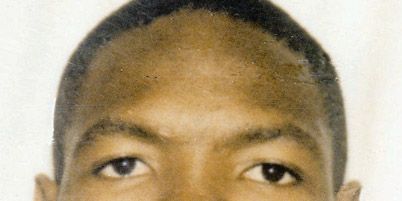MBWAMBO NICHOLAUS JR
JF-Expert Member
- Oct 27, 2018
- 424
- 427
Hili jambo kwa Africa bado sana ndio mana most of time hao ambao wanaotaka kufuta ushaidi wanahangaika kwa sababu wao wanafanya makosa kuwaajiri watu ambao hawana ujuzi nao na hiyo kazi yaani talentKuna vifo vinaendelea kutokea lakini hatuambiwi ni kina nani hasa.... Utambulisho wao hauwekwi wazi... Tunaambiwa tu ya kwamba aidha wanamalizwa au wanamilizana kufuta ushahidi.... Kama hili ni kweli basi hii sio dawa ya kutibu jeraha bali ndio kwanza linazidi kutanuliwa....
Si ma serial killers wote walipenda kuwa hivyo... Lakini walijikuta huko baada ya kutaka kupoteza ushahidi.... Soma kisa hiki.... Simulizi ya serial killer wa South Africa... Jarida la X-factor
Huyu jamaa aligombana na demu wake ghetto.. Kisa cha mahaba... Ni katika ugomvi huo alimsukuma yule binti akaanguka akaumia sana... Katika harakati za kumuwahisha hospital akafariki dunia kabisa
Kijana akapelekwa polisi akakaa mahabusu lakini katika mazingira yasiyoeleweka akatoka kwa dhamana... Baada ya kutoka akataka kufuta ushahidi kwa kuwaua wote aliowahisi wanajua ukweli
Akaaza na binti ambaye alikuwa rafiki wa marehemu.. Akammaliza... Lakini akahisi mama yake kaona naye akammaliza... Sasa kila ushahidi aliokuwa anaufuta ulikuwa unazaa ushahidi mwingine
Mwishowe akaruka dhamana na kuendelea kuua kila aliyehisi anaweza kutoa ushahidi wa kummaliza..... Kilichokuja kumpa umaarufu mkubwa ni kwenye tukio la kujaribu kukamatwa ama kuuliwa ambapo alipigwa shaba iliyomkosakosa ila ikaondoka na kidole cha NNE kile cha kufyatulia risasi
Tangu hapo akajulikana kama A SERIAL KILLER WITH FOUR FINGERS.... Mpaka anakuja kutiwa nguvuni alikuwa keshaua watu 41...! 20 akiwa na vidole vyote na 21 akiwa na vidole vinne... Ustadi wake wa kutumia bastola bila kidole cha kufyatulia pia kilimuongezea umaarufu...
Mode of the story.... :
Kama kinachoendelea kwa sasa ni cha kweli (Termination to wipe out evidence) basi kuna watu wataishia kuwa serial killers... Kwakuwa kila kichwa kitakachodondoka kitaacha ushahidi mwingine... Kumbuka damu ya mtu hunuka
Damu ya mtu hunuka
Unaweza kuuliza inanukaje na pengine unadhani ni baada ya kuhifadhiwa muda mrefu kwa utaratibu usio sahihi...kwenye mada hii sina maana hiyo Damu ya mtu ina harufu yake, harufu ya kushangaza harufu yenye kuvuta kwa namna ya ajabu kabisa...hii ni damu ile ambayo mhusika wake amekatishwa maisha...www.jamiiforums.com








